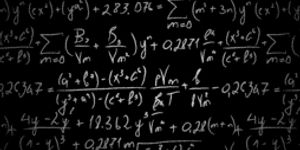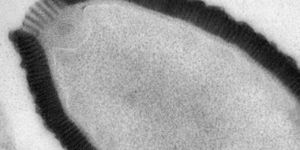Neuroscience
Preschoolers Demonstrate Basic Algebra Skills
MAR 12, 2014 12:00 AM PDT
Share
Computer Models Assist in Understanding Flying Snake Aerodynamics
 Did you know that snakes could fly? Not all of them, of course, but one in particular is known for its ability to glide easily from tree to tree.
Did you know that snakes could fly? Not all of them, of course, but one in particular is known for its ability to glide easily from tree to tree.The Paradise tree snake, a native of lowland areas of Asia, exhibits impressive aerodynamic behavior. They can brace themselves, coil their midsections into a nearly triangular shape, and fling themselves from one tree limb to another, traversing nearly 100 feet. While in flight, they make motions similar to the sinuous ones snakes use for ground travel.
A research team from George Washington University has been studying the aerodynamics of the Paradise snake in order to understand their movements and see if they could have potential applications to flying devices. Their work and conclusions were published recently in two different journals - in a January edition of the Journal of Experimental Biology, and more recently in Physics of Fluids.
The earlier work focused on the shape that the Paradise snake assumes when in flight. The "S" shape is accompanied by a flattening of their overall body shape, changing their normal tube shape into more of an arched semi-circle by flexing their ribs. It has been described as an odd UFO-like shape that increases the snake's overall surface area.
Using a 3-D printer, the team produced a model that mimicked the in-flight shape of the Paradise snake, and placed the model in a water-filled tank for fluid simulation tests. This arrangement allowed the team to test a range of fluid speed and angle conditions.
When the model snake was placed level to the fluid flow, the effect was actually to pull the model down, but tilting the model snake to a 35° angle with the flow produced a massive relative lift under high speed conditions. By adding tiny reflective beads to the fluid media, the team was able to track the vortices formed under different conditions, and clearly see the effect of small vortices in the lift at 35° and the drag at no angle.
This research clearly showed that the snakes receive extra lift by adjusting their body to approach airflows at a specific angle through creating vortices, but the fluid mechanical reason for the vortices was not clear.
More importantly, the interaction of the air currents with the shape of the snake in-flight, as well as the snake's movements, is not fully understood. The sinuous movements may be the snake's method of performing small corrections to maximize its ability to glide for distance in whatever wind pattern it faces.
The follow-up work of the team has focused on computer simulation to more precisely define the interaction between the snakes and the fluid forces acting on them during flight. The paper in Physics of Fluids uses a 2-dimensional computer model to show the same lift effect as the 3-D physical model of the previous study. In the computer model, the effects on the boundary layer of the snake's dorsal surface create a secondary vortex, keeping the primary vortex closer to the snake's body, thus producing higher lift.
The team hopes to include more variables in future computer models to further enhance understanding of the mechanism, and potentially come up with new types of efficient gliding machines (but hopefully not new types of efficient gliding snakes - one is enough).
You May Also Like
Loading Comments...








